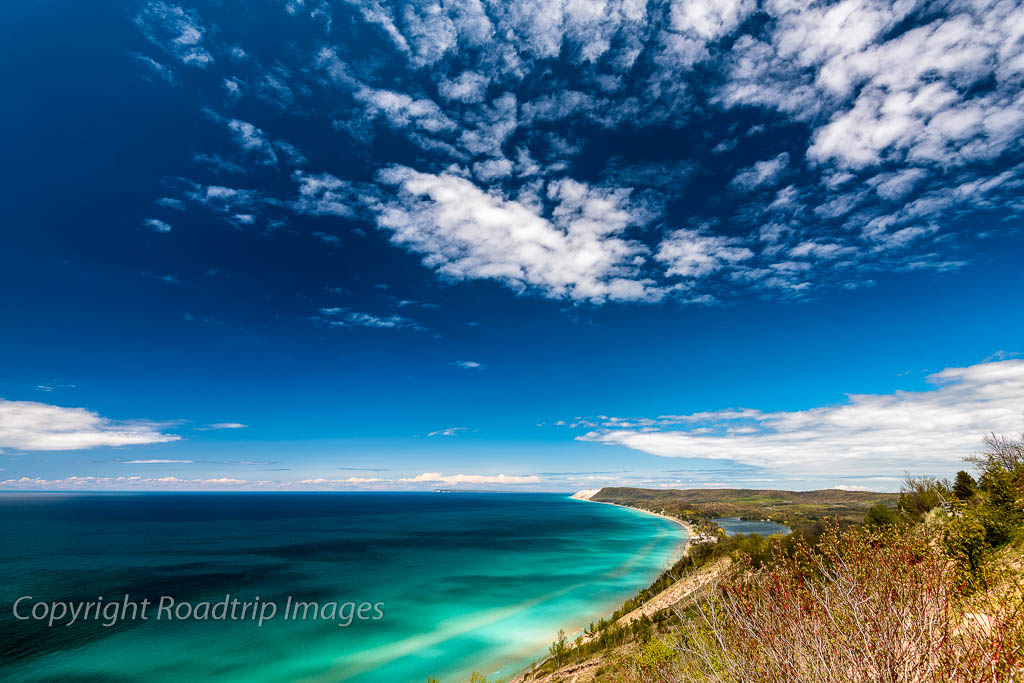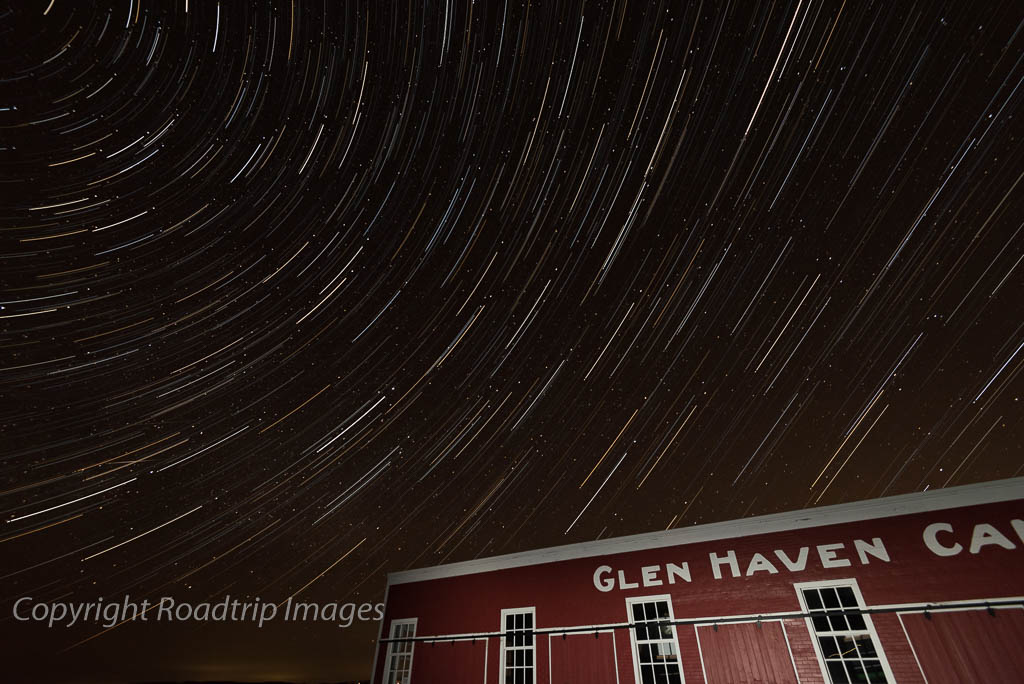
Since we currently live in Northwest Michigan, one of my favorite places to go for a hike is the Empire Bluffs Overlook trail in the Sleeping Bear Dunes National Lakeshore. This is the place that Good Morning America named the most beautiful place in America back in 2011.
With 64 miles of Lake Michigan beach, 50,000 acres of preserved dunes and lake shore, two islands and 26 inland lakes, this is truly a magnificent location. The Dunes are extensive and several tower 400 feet above the lake. The main part of the Park has an overlook with a viewing platform that is just a short walk from the parking lot. The dune they call the Sleeping Bear is there and it’s a steep 400′ drop to the lake. Running down the dune is pretty wild but coming back up can take two hours if you’re out of shape. It’s a brutal climb that feels like it’s straight up. It’s quite a view and it’s where most of the Park’s visitors go but it’s not very photogenic. The image above is just South of there from another dune called Empire Bluffs. It’s just as tall and has a better view in my opinion. It also requires a strenuous hike to get to the overlook so it’s not as crowded. It’s my favorite spot for a view of Lake Michigan and the Sleeping Bear Dunes. If you follow the shoreline in the above photo to the large exposed dune, that’s the Sleeping Bear I mentioned above.
This vantage point looks over a beautiful blend of turquoise and deep blue water, a lakeshore that’s a wonderful leading line into the image, and if you look closely you can see the Manitou Islands on the horizon just off the Sleeping Bear. If you’re into sailing this is one of the best cruising grounds on the Lake. The Caribbean turquoise waters are not a Photoshop fabrication, it really does look like that as you near the shore. The water is very clear and clean. This reduced resolution image doesn’t do it justice. In the full res photo the color gradations in the water really stand out.
A couple of tips on composition, especially with broad vistas over the water like this. First try to find a leading line that draws the eye into the image. In this case it’s the shoreline leading you to the Sleeping Bear. Second, drop the horizon and include a lot of sky if you have some interesting clouds. Too many photos have the horizon running exactly through the middle of the frame. Adding a lot of sky with interesting clouds really makes an image stand out and a wide angle lens creates this kind of perspective. This was shot at 16mm on a full frame sensor. Third, use a polarizer to deepen the blues in the sky and bring out the color separation in the water. Lastly, try to put your main subject off center. You may have heard about the rule of thirds for composition. If you divide the frame into thirds both horizontally and vertically, try to place your subject at the intersection of one of the horizontal and vertical thirds. Having the subject right in the middle of the image is less interesting. It’s not a hard and fast rule as I broke it somewhat here so that I could get the cloud formation where I wanted it in the sky.
Sometimes the main viewpoints are not the best. Many times they’re just the easiest to get to and therefore very crowded in peak season. If you can hike just a bit there may be a much better place to shoot from. At this overlook, you can sit there for hours just gazing out over the Lake, watching the ships go by and just enjoying the beauty of this place without the crowds. I’ve been known to do it a few times myself.
Nikon D810, Nikkor 16-35mm @16mm, f/8, 1/125″ with circular polarizer. Post processing with Lightroom, Photoshop, & Nik Collections Color Efex Pro 4.
2 Comments
Leave a comment Cancel reply
This site uses Akismet to reduce spam. Learn how your comment data is processed.



Is there a possible to purchase a panoramic picture of this- maybe 50-55” long (wide) suitable for framing?
Please message me:
dlweston30@hotmail.com
Message sent…